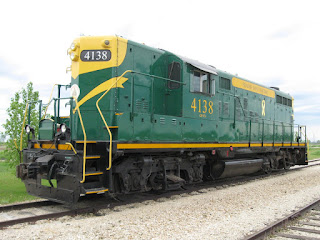
Minnesota & Manitoba Subdivision.
Unless you’re Bill Gates or Warren Buffet (who can buy his own real railroad), you don’t have unlimited funds for model railroading. You have to set a budget, and stick to it.
Unfortunately, sticking to a budget can be tough. There’s always some great new locomotive or piece of rolling stock coming out—something you just have to have. What to do?
My solution was to choose a railway, time period and locale. In my case, it’s CP Rail in the early to mid-1990s in western Canada.
How does this help me stick to a budget? Easy: If it wasn’t seen on CP Rail in the early to mid-1990s in western Canada, I don’t buy it. This mean that all those wonderful new steamers and modern diesel locomotives can stay on the shelf at my local hobby shop—and my money can stay in my wallet.
Some decisions are easy: No SD90s on my layout—too modern. But rolling stock poses a different challenge. When a new item in CP Rail livery comes out, I check the build date. If it fits my timeframe, I research where it might normally have been found on the real railway; if it wasn’t seen in the area I model, I don’t buy it.
Along with saving money, sticking to an era, locale and railway enhances plausibility. If you wouldn’t see Santa Fe Warbonnets in Manitoba in real life, why would you expect to see them on a model railroad? That livery is one of the best ever made, to be sure, but it would look wrong on the M & M Sub.
Of course, when it comes to how you enjoy the hobby, everything is subject to rule #1 of model railroading: It’s your layout—you can run whatever you want. But it seems to me that choosing an era, railway and location not only saves money, it makes the hobby more focused and challenging.
As a bonus, it also means you won’t have to rent a table at a local flea market to sell off all that stuff you bought, but never run.
Unless you’re Bill Gates or Warren Buffet (who can buy his own real railroad), you don’t have unlimited funds for model railroading. You have to set a budget, and stick to it.
Unfortunately, sticking to a budget can be tough. There’s always some great new locomotive or piece of rolling stock coming out—something you just have to have. What to do?
My solution was to choose a railway, time period and locale. In my case, it’s CP Rail in the early to mid-1990s in western Canada.
How does this help me stick to a budget? Easy: If it wasn’t seen on CP Rail in the early to mid-1990s in western Canada, I don’t buy it. This mean that all those wonderful new steamers and modern diesel locomotives can stay on the shelf at my local hobby shop—and my money can stay in my wallet.
Some decisions are easy: No SD90s on my layout—too modern. But rolling stock poses a different challenge. When a new item in CP Rail livery comes out, I check the build date. If it fits my timeframe, I research where it might normally have been found on the real railway; if it wasn’t seen in the area I model, I don’t buy it.
Along with saving money, sticking to an era, locale and railway enhances plausibility. If you wouldn’t see Santa Fe Warbonnets in Manitoba in real life, why would you expect to see them on a model railroad? That livery is one of the best ever made, to be sure, but it would look wrong on the M & M Sub.
Of course, when it comes to how you enjoy the hobby, everything is subject to rule #1 of model railroading: It’s your layout—you can run whatever you want. But it seems to me that choosing an era, railway and location not only saves money, it makes the hobby more focused and challenging.
As a bonus, it also means you won’t have to rent a table at a local flea market to sell off all that stuff you bought, but never run.
















